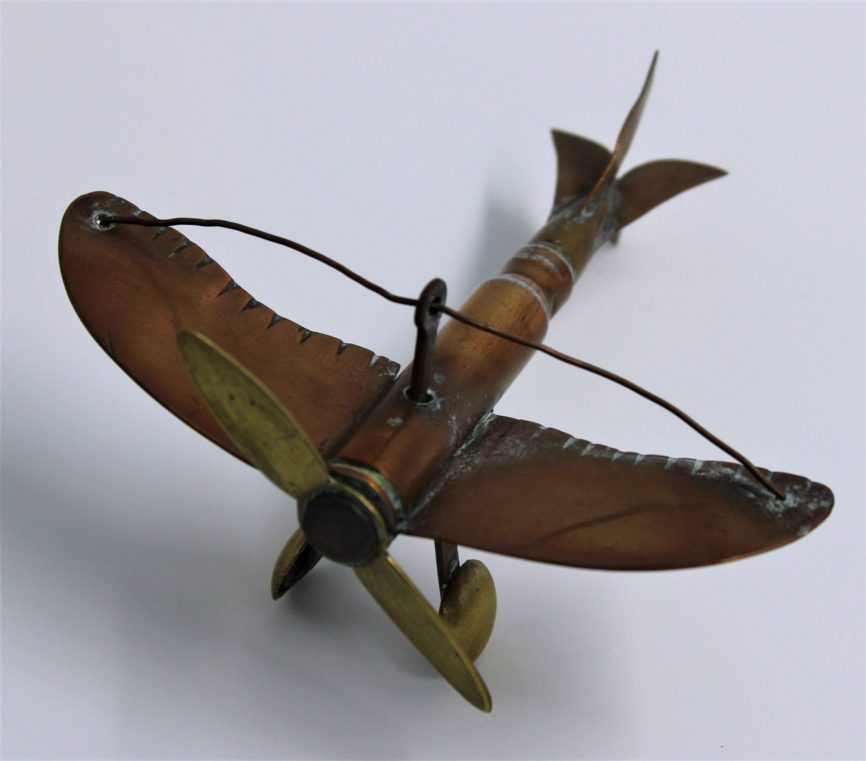‘Trench Art’
‘Trench art’ is a catch-all term which describes items made by soldiers and civilians during and after World War 1 & World War 2 out of battle debris. It has also been used to refer to objects fashioned during earlier and later wars. Trench art continues to be made today in areas of Africa and the Middle East by civilians who have access to left over munitions from recent or ongoing conflicts.
It is only recently that these items have come to be viewed by historians and museum curators as important cultural objects which can tell us a lot about the complex experience of war and the resourcefulness of the people who were involved in it. Bodmin Keep has a range of trench art, each object intriguing and detailed pieces of work.
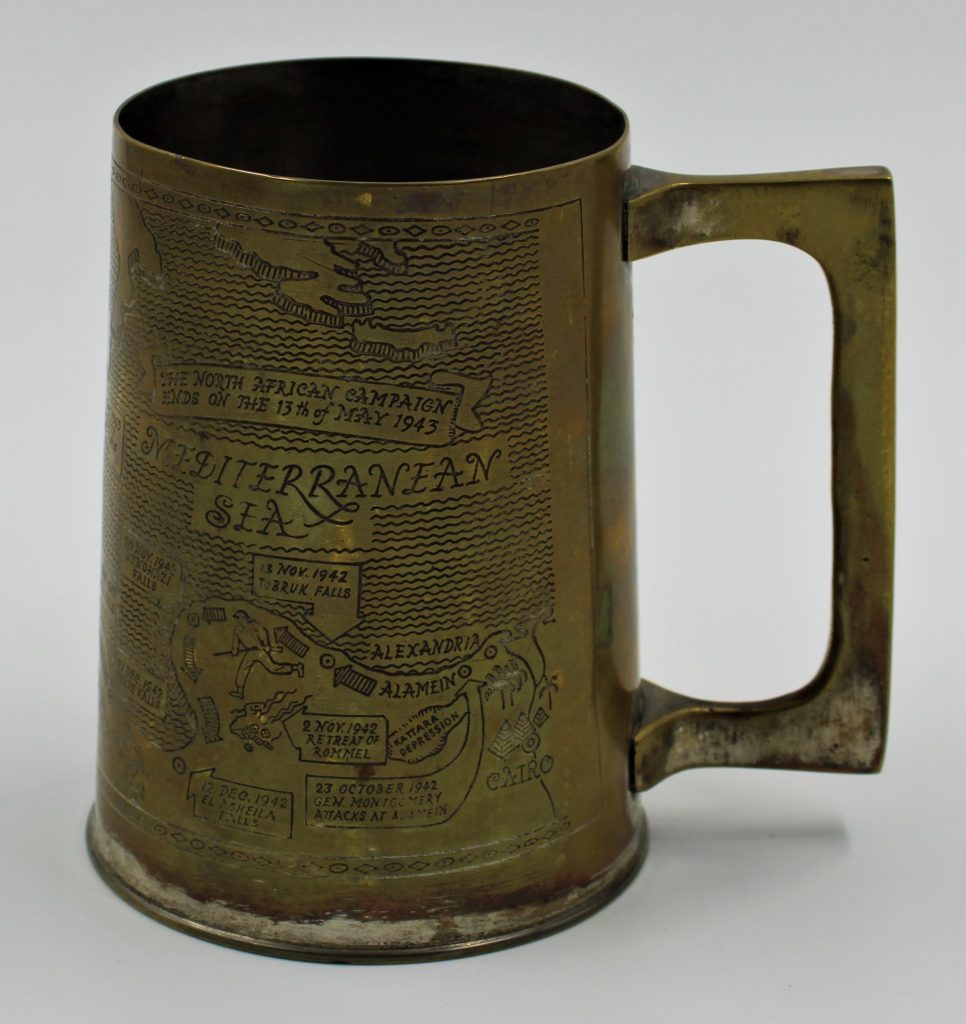
Engraved tankard made from a shell taken from a battle field in North Africa. It depicts the movment of troops across the region during 1942-1943.
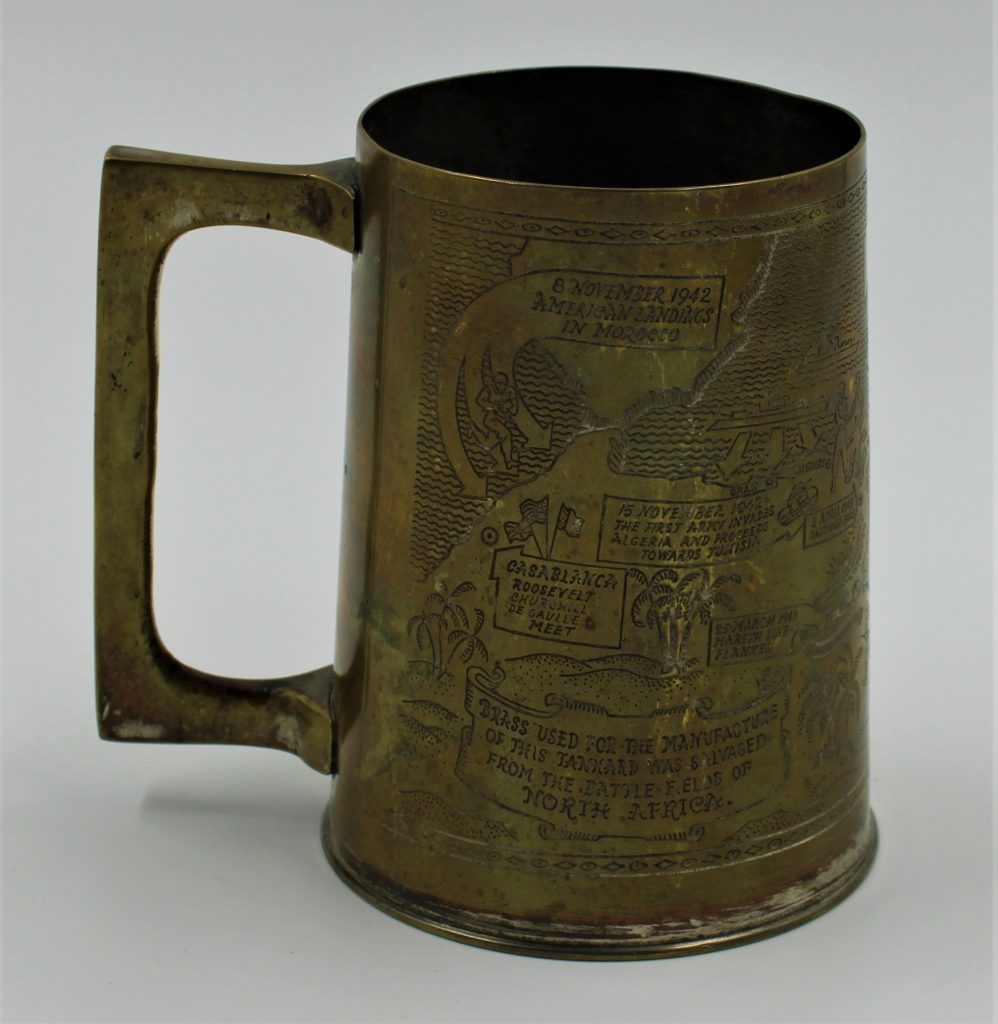
The most prevalent types of trench art are curios and functional items made from the debris of war left on the battlefields. The metal from shell casings, bullets and shrapnel would have been hammered flat, reshaped, pieced together and inscribed or decorated to make wartime souvenirs. Trench art historian, Nicholas Saunders (2000), has identified three different types of metal trench art.
1 Objects that were made in the trenches, ‘in view of the enemy’.
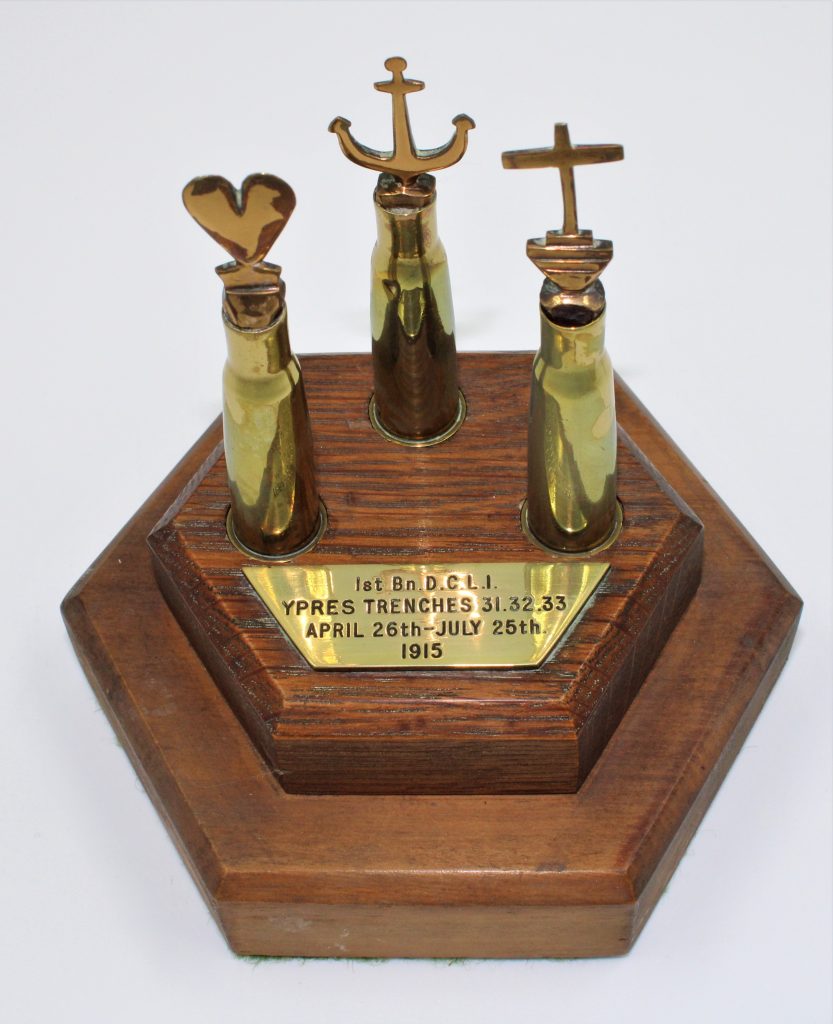
Bullets hammered into decorative shapes. Made by 1st Battalion DCLI in Ypres trenches
These include small, crude items made in the trenches on the front line. Sometimes this type of trench art would be made by soldiers to entertain themselves. However, most of it was made in the safer, rear areas by off-duty soldiers or men who were not infantry soldiers and had more time to spare, machinery and expertise. Types of objects include cigarette lighters, matchbox covers, letter openers, finger rings, tobacco boxes and cigarette cases.
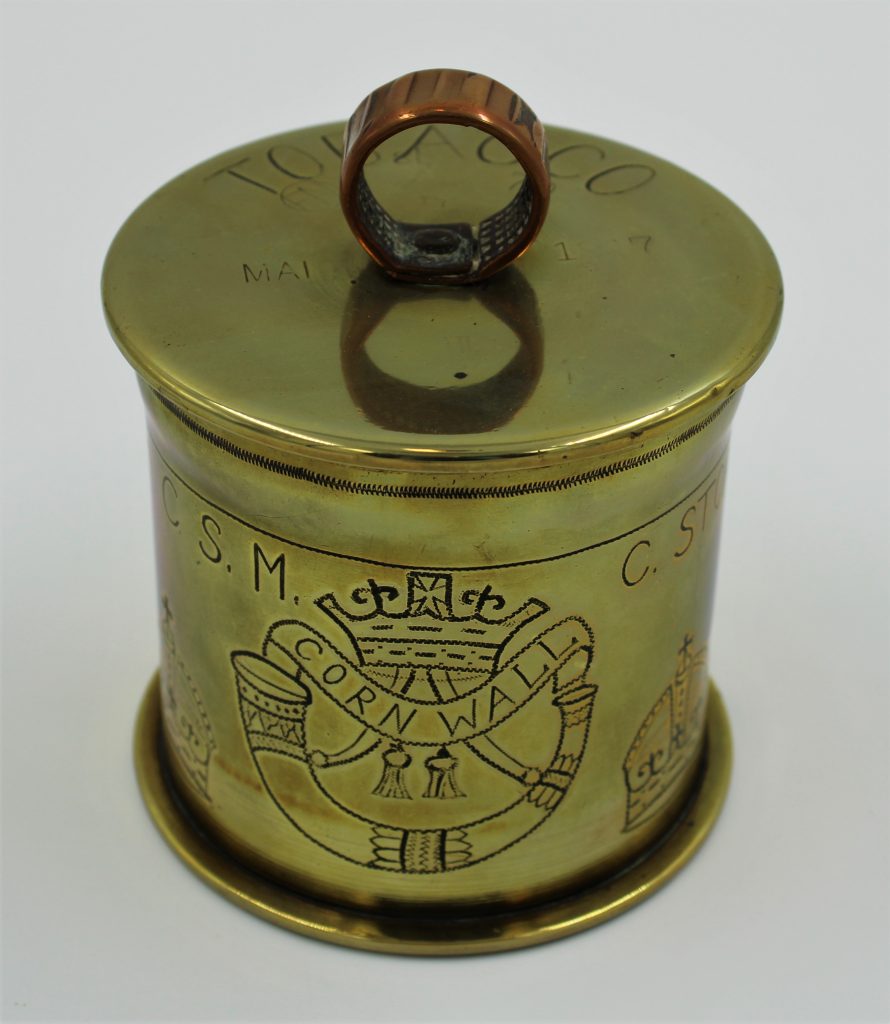
Tobacco box with DCLI insignia, made by prisoners of war.
Many of these objects were ‘made to order’. Often this can mislead relatives, who possess trench art with a name inscribed on it, into believing that their ancestor made it themselves. Often this was not the case. Trench art of this type was also made by prisoners of war. They could trade their creations for things like food or cigarettes and help fill long hours of doing nothing.
2. Objects that were made by civilians.
Post-war, civilian populations in France and Belgium were left with economic deprivation and a huge supply of leftover battle debris. Enterprising civilians, aware of the growing market for souvenirs amongst soldiers, tourists and bereaved family members who came to visit the sites of war, fashioned ornaments from the shell casings and bullets which littered their homes. Types of objects include shell casings decorated with floral designs, elaborate ashtrays, bullet crucifixes with Christ figures, letter openers more detailed than category 1, and small decorated shell cases mounted on a tripod. These pieces of trench art are easy to identify because they will often have the start and end date of the war inscribed onto them.
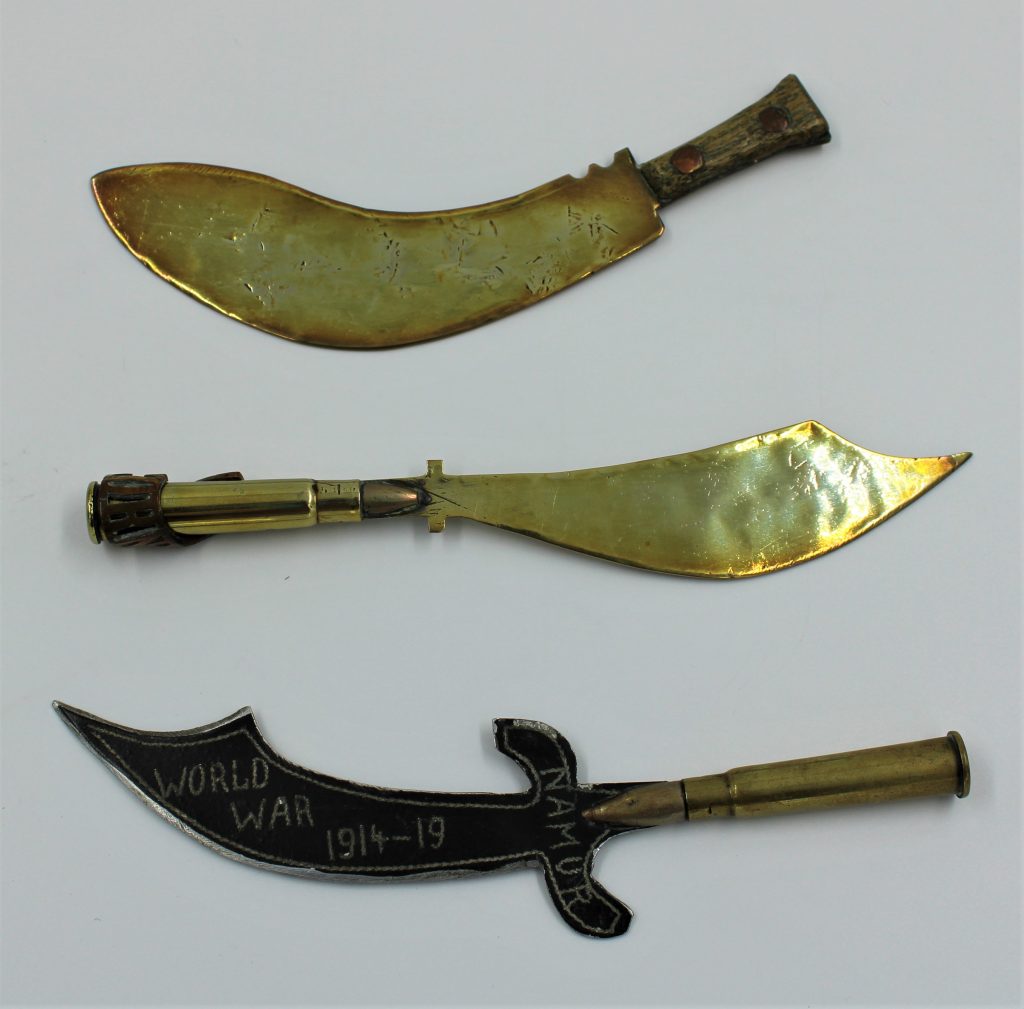
Letter openers with bullet handles.
Officially the use of expended British shells to make trench art was illegal, as they were to be collected and reused. However, there were so many shell casings produced by other countries lying around and little enforcement of this rule.
3. Objects made away from the battlegrounds by companies back home in Britain (and elsewhere).
These objects were fashioned by experts in metalworking to make souvenirs for soldiers who brought back ‘raw’ material that hadn’t yet been turned into trench art. Types of objects include lamps, candlesticks, clocks, inkwells, tankards, and dinner gongs. This kind of trench art was often mounted on wood and was designed to be displayed in domestic homes. Saunders argues that these objects ‘tam[ed] the experience of war, softening harsh memories’. Because they were made of brass, they required regular polishing to avoid tarnish. Sauders suggests that this act of caring for the trench art may have been therapeutic for grieving families.
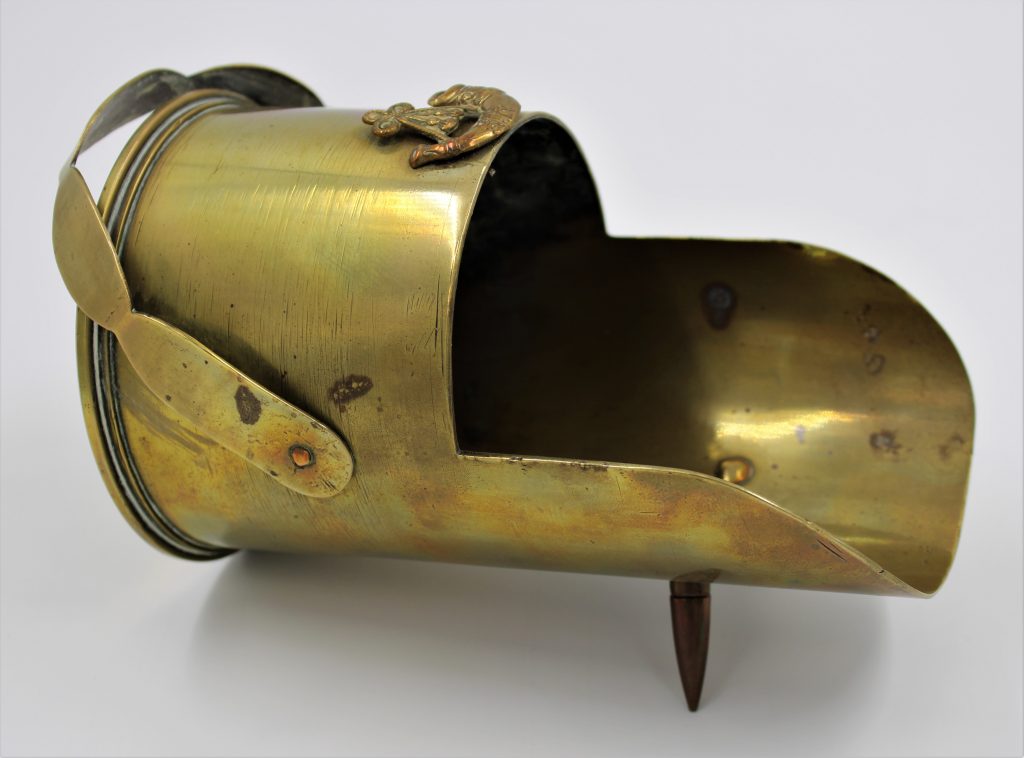
Coal Scuttle with DCLI cap badge.
Trench art is a term which is also applied to other decorative items made by soldiers during the war, including embroidery, painting and drawing. These objects were often made by soldiers who were recovering from injuries in hospital or convalescing elsewhere. Many pieces of embroidery were the result of occupational therapy programmes, designed to rehabilitate wounded veterans.
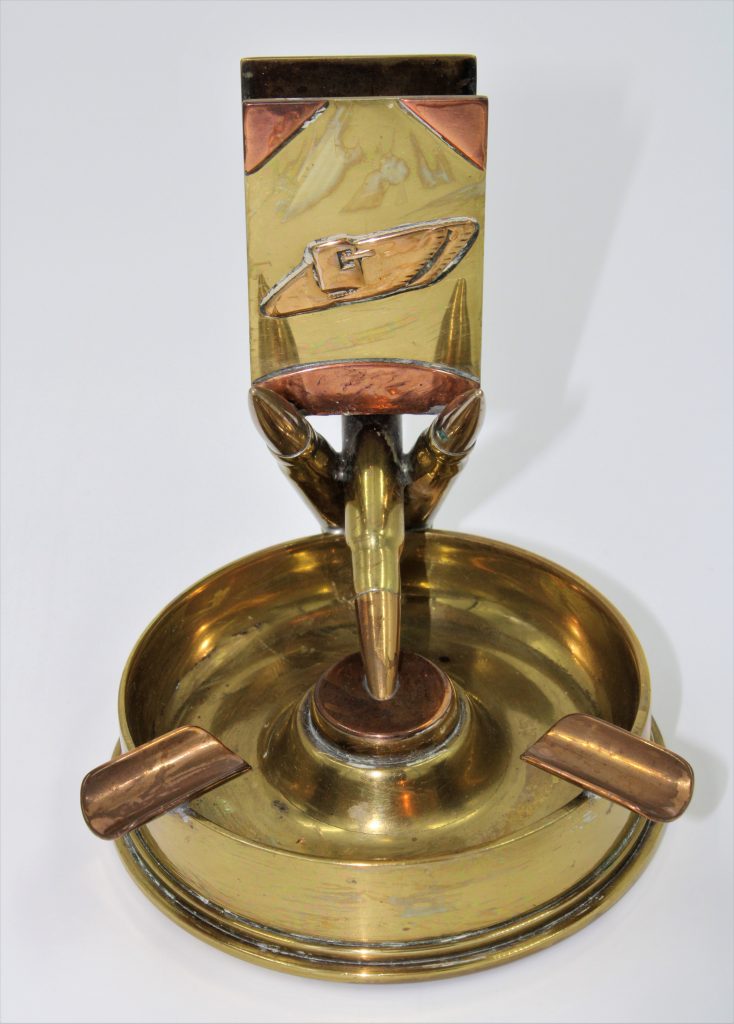
Ashtray made by William Sillance of the Royal Tank Corps. His cap badge can be seen on the matchbox holder. The shell case for this trench art was picked up in “Trones Wood” in France and the bullets are both English and German. The centre piece is made from a halfpenny, and the cigarette rests are two pennies.
Saunders argues that trench art “capture[s] the spark of creativity, the soul, at the boundary of our physical and mental endurance”. Producing items of such whimsy in the midst of a war demonstrates great resilience of the human spirit. As does having the strength to return to the post-war remnants of your town, destroyed by shellfire, to collect pieces to work into trinkets to pull yourself out of economic hardship.
Made from the debris of ammunition, trench art turned instruments of death and mutilation into items of beauty. Saunders argues, there is a cruel irony to trench art. Whilst the broken pieces of shrapnel and shells could be pieced back together, forming something new, the soldiers’ bodies torn apart by these same metals could not be. These are objects which symbolise pain and loss but also ingenuity and hope.
Cornish, P. (2016) ‘Trench Art’. 1914-1918-online: International Encyclopedia of the First World War. ed. by Ute Daniel, Peter Gatrell, Oliver Janz, Heather Jones, Jennifer Keene, Alan Kramer, and Bill Nasson, issued by Freie Universität Berlin, Berlin. DOI: 10.15463/ie1418.10805. [online] Available at: https://encyclopedia.1914-1918-online.net/article/trench_art [Accessed 30/03/20].
References:
Read, F. (2018) ‘Trench Art’. Imperial War Museum. [online] Available at: https://www.iwm.org.uk/history/trench-art [Accessed 30/03/20].
National Army Museum Te Mata Toa (nd) ‘Personal Treasures: WW1 Trench Art’. [online] Available at: https://www.armymuseum.co.nz/whats-on/world-war-one-centenary/personal-treasures-wwi-trench-art/ [Accessed 30/03/20].
Saunders, N. (2000) ‘Bodies of Metal, Shells of Memory: ‘Trench Art’, and the Great War Re-cycled’. Journal of Material Culture. 5:1 p.43-76.
Saunders, N. (2014) ‘Trapped in Shells: Mindset and Materiality in First World War Trench Art’. Oxford University Department for Continuing Education. [online video] Available at: https://www.youtube.com/watch?v=rEK78hZHHBw [Accessed 30/03/20].

